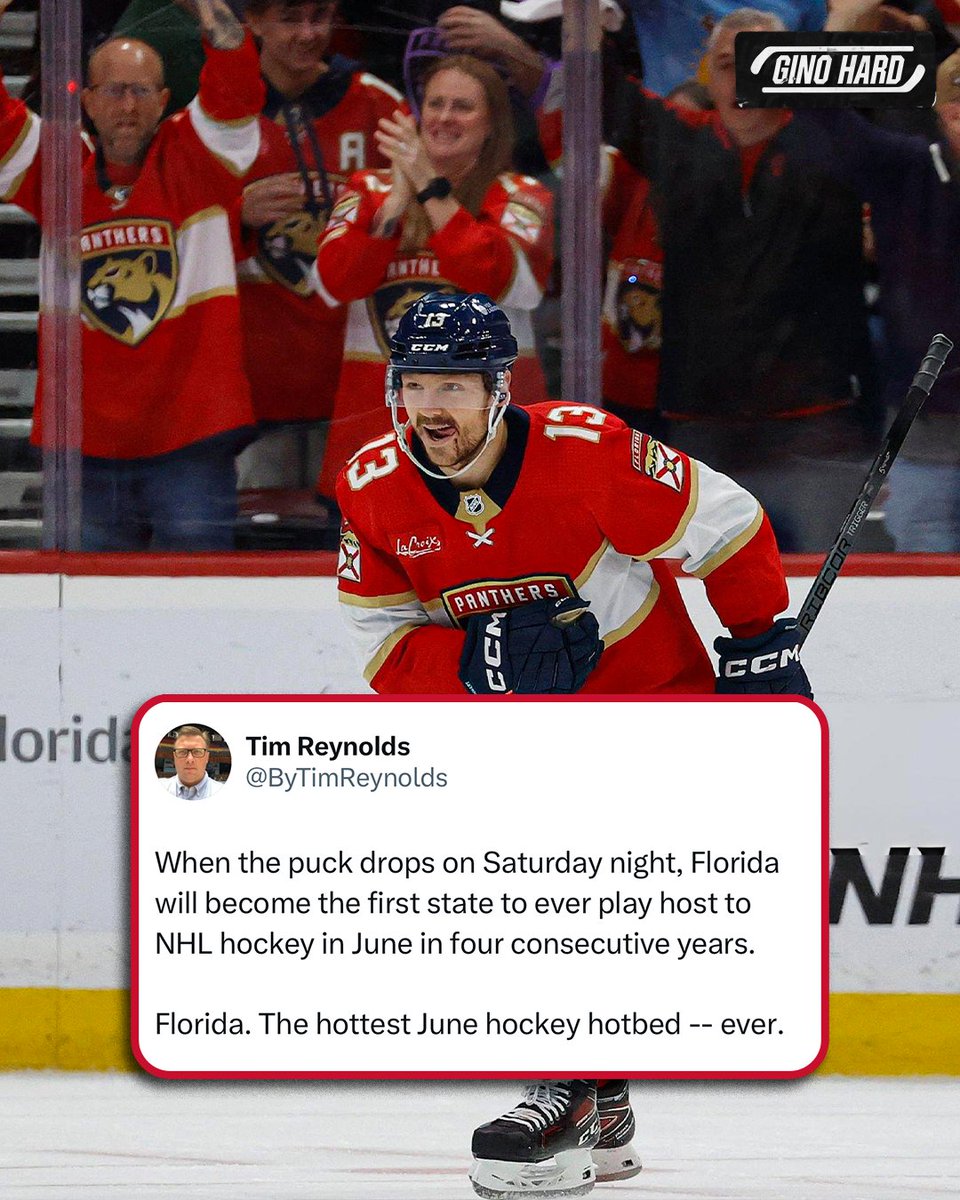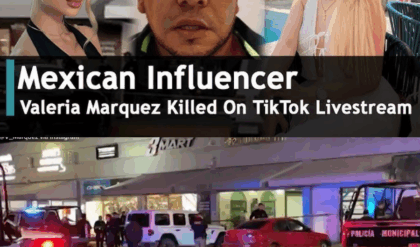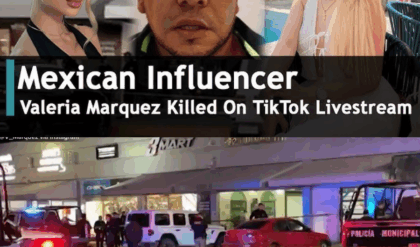Phil Esposito helped lay the foundation for the growth of hockey in Florida. It’s paid off with skyrocketing demand and Stanley Cups, as discussed in this 2023 Archive feature

The Florida Panthers and Tampa Bay Lightning have given their fans tons to cheer about in the past four years.
The Lightning won the Stanley Cup in 2020 and 2021 while almost completing the threepeat in 2022, which was when the Florida Panthers won the Presidents’ Trophy as the NHL’s top regular-season team.
Last year, the Panthers then made it to the Cup final on a surprising run before bowing out to the Vegas Golden Knights. But this year, they finally won their first Stanley Cup in franchise history.
And in each of the past three years, the Florida Everblades have dominated in the ECHL Kelly Cup final, winning their third straight championship this year while only dropping two games total in those three finals combined.
In January 2023, Erin Brown wrote a feature that appeared in The Hockey News’ Rookie Issue (Volume 76, Issue 9) about hockey catching fire in Florida at every level, with the demand so high it couldn’t keep up. And Phil Esposito laid the foundation for growth of hockey in the state.
Check out the story below, and remember: for access to more than 76 years of hockey content in The Hockey News Archive, visit THN.com/free and subscribe to our magazine.
HOCKEY’S HOTTEST HOTBED
Phil Esposito remembers driving from Orlando to Tampa Bay wondering if he had made a mistake. On his way to meet investors to secure funding and a home for an NHL expansion team in Florida, he was stunned by the journey through desolate swampland. “When I was driving in, I thought, ‘Where are the buildings? There are no freakin’ buildings,’” Esposito said. “How could this be the 12th-largest television market in the country?”
Yet, once he reached the coast and saw the development stretching north and south of Tampa Bay, Esposito knew his vision wasn’t far-fetched. Others up north, however, still remained skeptical. “I can’t tell you how many people up in Canada, New York and Boston thought I was nuts putting a hockey team in Florida,” Esposito said. “The worst was this guy who called me. He said, ‘How do you play hockey in that heat?’ I said, ‘We play indoors, you stupid son of a b—-!’”
More than 30 years later, Esposito can look back and laugh at all the doubters. Often mocked in hockey circles for its lack of cold, the Sunshine State is proving the sport can thrive in the tropics.
Tampa Bay, which, last June, fell just short of a fourth Stanley Cup, is celebrating its 30th anniversary in 2022-23. The Presidents’ Trophy-winning Florida Panthers will do so next season. And not to be overlooked are the defending ECHL champions, the Florida Everblades, who captured their second Kelly Cup in their 24-year history last season.
The amateur game is booming, too. In 2021-22, Florida saw a 10.4-percent increase in player registrations above its 2019 pre-pandemic metrics. It is one of just three states, alongside Montana and Texas, to grow at every level, from six-and-under to adult.
Florida also ranked second in new players, with 1,769 more than in 2019. It was one of just 23 states to rebound from the COVID-19 downturn of 2020-21, and one of three, along with Nevada and Minnesota, to post gains of at least 1,000 new players in that span.

With 18,725 players now skating across the peninsula, Florida has surpassed more traditional states such as Connecticut, New Jersey and Ohio. If the state can sustain this rate of growth, it stands to pass hockey-mad Wisconsin in the next few years.
Steve Lynch, executive director of Statewide Amateur Hockey of Florida, said the recent success of Florida’s professional teams and their initiatives to grow the game on and off the ice have been a driving force. “All their different efforts are making an impact,” Lynch said. “It also helps to have a team competing in the Stanley Cup final every year and another making the playoffs.”
A year before the NHL awarded Tampa Bay a franchise, Florida had fewer than 100 players, according to USA Hockey. Those numbers jumped to approximately 1,200 in the Lightning’s first season in 1992-93. About 300 more signed on when the Panthers began play the following season. The state experienced steady growth in the late 1990s and early 2000s, with brief spikes as both teams moved into hockey-dedicated arenas and added to the local infrastructure with practice facilities.
Those early years have produced 10 Florida-born NHL players, seven in the past five seasons alone. In that same span, an average of 25 players have been playing at the NCAA Div. I level. Prior to Tampa’s first season, only seven Floridians had played in the NHL, and few – if any – claimed the state as the home of their youth career.
Now, Floridian players are not only increasing in number, they have also started to return home to play. In 2020-21, Zach Solow, a product of the Florida Junior Everblades, spent the season with the ECHL’s Everblades, scoring two goals in the club’s Kelly Cup-clinching victory. And, in November 2021, Chase Priskie became the first locally trained player to suit up for the Panthers.
In pre-season action last September against Arizona, Priskie even found himself on the ice with two other products of South Florida youth programs: Jakob Chychrun and Shayne Gostisbehere. “I thought that was extremely cool, to chat with both of those guys,” Priskie said. “You just see how far the game has come.”
Florida has witnessed year-to-year growth in all but three years. Two of those were the result of circumstances that kept organizers from capitalizing on a Tampa Bay Stanley Cup victory: the NHL lockout following the Lightning’s first championship in 2004 and the pandemic after their second in 2020. The other downturn occurred in 2008, the first of three straight seasons in which neither the Lightning nor the Panthers made the playoffs.
In the early 2010s, the two teams recaptured attention with a couple of post-season appearances. Then billionaires Jeff Vinik and Vincent Viola assumed control of the Lightning and Panthers, respectively, and provided an influx of funds to grow the game. “I say this with all due respect to (original Panthers owner Wayne) Huizenga and others, if you have good ownership, it trickles down,” Esposito said. “That’s Vinik. Viola has made a difference.”
When Tampa Bay and Florida emerged in 2020-21 among the NHL’s best teams, then met for the first time in the playoffs, Lightning coach Jon Cooper noted the game would attract a level of attention previously unseen. “It’s good for the game, it’s good for the state of Florida, it’s good for all of us,” Cooper said. “It’s pretty much guaranteed that every TV in every sports bar is going to have our hockey games on, and that can do nothing but help. We’ll be on in every rink.”
SAHOF now finds itself in a position of not only taking the next step to develop the next generation of players but finding the resources to keep up with the growth. “Now it’s time to look at the state of Florida and ask, ‘How do we keep the game moving forward?’”said Josh Dreith, who manages youth-hockey initiatives for the Lightning. “Everybody needs to be ready for the door that’s going to open.”
Three hours from Tampa Bay, Jacksonville stands as the next market primed for growth. Since joining the ECHL in 2017, the Jacksonville Icemen have ranked among the top five in league attendance. Last season, they set a franchise-best average of 6,405 fans per game.

The team’s biggest impact, however, might be in the renovation of the Community First Igloo. Completed at the end of 2022, the site has two NHL-sized rinks, the Icemen’s training facility, a restaurant, pro shop and an eSports gaming lounge. A long-term goal is to add a rink in St. John’s County, just south of Jacksonville.
While Florida boasts 26 facilities with ice surfaces, it accounts for just 1.7 percent of the 1,545 in the country, according to the U.S. Ice Rink Association. And at least four of the 26 are home to professional franchises, which are rarely used to support the amateur game in the way a recreational rink does. South Florida stands to see the most immediate expansion of infrastructure, with four sheets opening between the Panthers’ new practice facility in Fort Lauderdale and another site up the road in Boca Raton. Despite an estimated 10 more that could open in 2023, it’s still not enough to meet demand across the state. And as the 2022-23 season hit its midpoint, a number of organizations were struggling to find enough ice.
Back in 2002, the Florida Women’s Hockey League started as a five-team organization. This season, 15 teams – including women’s club teams from the universities of Miami, South Florida and Tampa – will play across three divisions. FWHL president Karen Ota-O’Brien said part of the growth is being driven by more women taking part in adult learn-to-play programs. The competition to secure ice time for league play, however, has forced the FWHL to drop the number of events it holds every season from five to four. “The women at the board meeting said, ‘Did you try this rink?’ Yes, we did. We emailed. We called,” Ota-O’Brien said. “But they all understood (the lack of availability) because they’re all playing in these cities, so they notice it as well.”
Even if players are able to find ice, the next hurdle is finding referees. “The player growth rate is growing exponentially compared to officials,” said Sean Corbin, president of Central Florida Hockey Officials.
Although there are 652 officials registered, Corbin estimates only about half are working on a consistent basis. There’s also concern about meeting officiating requirements to match the improving quality of play.
The Lightning and Panthers, meanwhile, are trying to take advantage of the momentum by buying time through floorball programs implemented in thousands of schools and community centers.
And, of course, there’s the task of establishing what it means to be a hockey player from Florida. Whereas northern states share bonds forged in winter, the Sunshine State offers a completely different experience. Dreith, a Toronto native, thinks it is an aspect to be embraced.
“Sure, you can learn from other states, but why don’t we be ‘Florida hockey,’” Dreith said. “What is Florida hockey? Let’s be the best Florida hockey we can be. Let’s be a badass hockey state. We can go to the rink in our sandals, play the best teams around, then go to the beach after.”
The idea of going from skates to sandals is part of what influenced Esposito. “I remember as a player in January coming out of the Montreal Forum, 10 below zero, freezing my ass off,” Esposito said. “When I leave this building, it’s 65, 70 degrees. What would you rather do?”
In the NHLPA’s 2022 player poll, Fort Lauderdale ranked third (10.4 percent) as the “best NHL road city to spend an off day” behind Las Vegas (30.6 percent) and New York City (17 percent). It’s easy to understand the appeal. Teams in town to play the Panthers usually stay along Fort Lauderdale Beach. If scheduling permits an off day, players can take advantage of a swim in the ocean, a boating or fishing trip or a round of golf‚ all in the middle of winter.
Those who get to live the lifestyle every day sell the lifestyle, too. During lockdown in 2020, Nova Scotia native Alex Killorn became known for his jet-ski rides around Hillsborough Bay. “Now that I’m an influencer,” Killorn joked, “I feel I’ve got to give you some content.” As he pulled up to the dock of Steven Stamkos’ Davis Island mansion, Killorn noted, “the views just went up, real quick.”
Farther south, Panthers defenseman Aaron Ekblad takes to his social-media accounts to showcase his latest hauls of swordfish, mahi and red snapper from Atlantic Ocean deep-sea fishing trips with teammates. Aleksander Barkov, an avid tennis fan, likes to share his view as a spectator when the Miami Open is held in March. In August, Carter Verhaeghe added to his social clout by serving as Grand Marshal of NASCAR’s Coke Zero 400 at Daytona International Speedway.
Teams are also leaning into making their markets destination cities. When the Panthers hosted their development camp in July, the schedule included paddle boarding and a beach workout. For a prospect like Ben Steeves, a freshman at Minnesota-Duluth who earned an invite to camp, the experiences are tempting.
“We had a lot of fun,” Steeves said. “It’s Florida. The heat and the people and place, it’s great. With how well the Panthers did last season winning the regular season, it’s pretty cool to play here. They have a lot of good players and a lot of players want to play here.”
That includes the newest Panther, Matthew Tkachuk. The 25-year-old had Florida atop his list when he decided he wouldn’t re-sign a long-term deal with the Calgary Flames.
Born in Arizona, raised in St. Louis and a product of USA Hockey, Tkachuk is also in touch with the state of the game across the country. He’s seen firsthand evidence of positive change in Florida, especially during his trips to the state since his rookie season in 2016.
Now he’ll get the opportunity to continue what Esposito began nearly three decades ago. “I’m sure (winning is) going to attract the next wave of Florida hockey players,” Tkachuk said. “That’s a really big goal of mine. I’m excited for the chance to get to grow the game down here.”
The Hockey News Archive is an exclusive treasure trove of more than 2,640 issues and more than 156,000 articles exclusively produced for subscribers, chronicling the full history of The Hockey News from 1947 until this day. Visit the Archive at THN.com/archive and subscribe to the magazine at THN.com/free.






